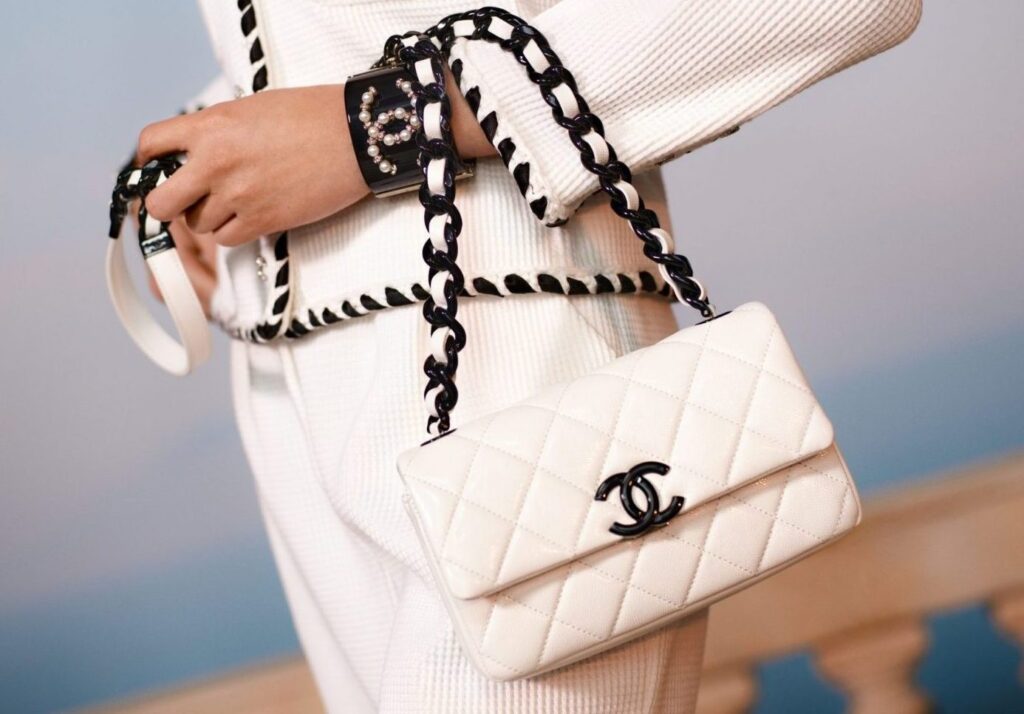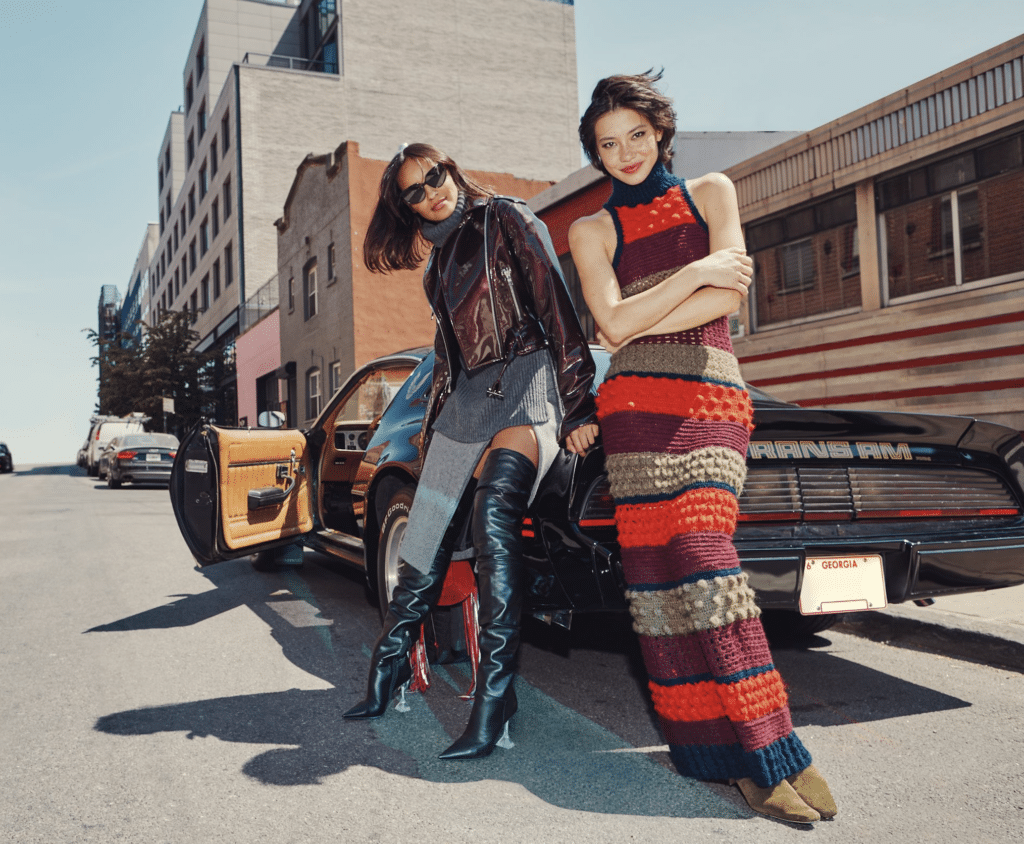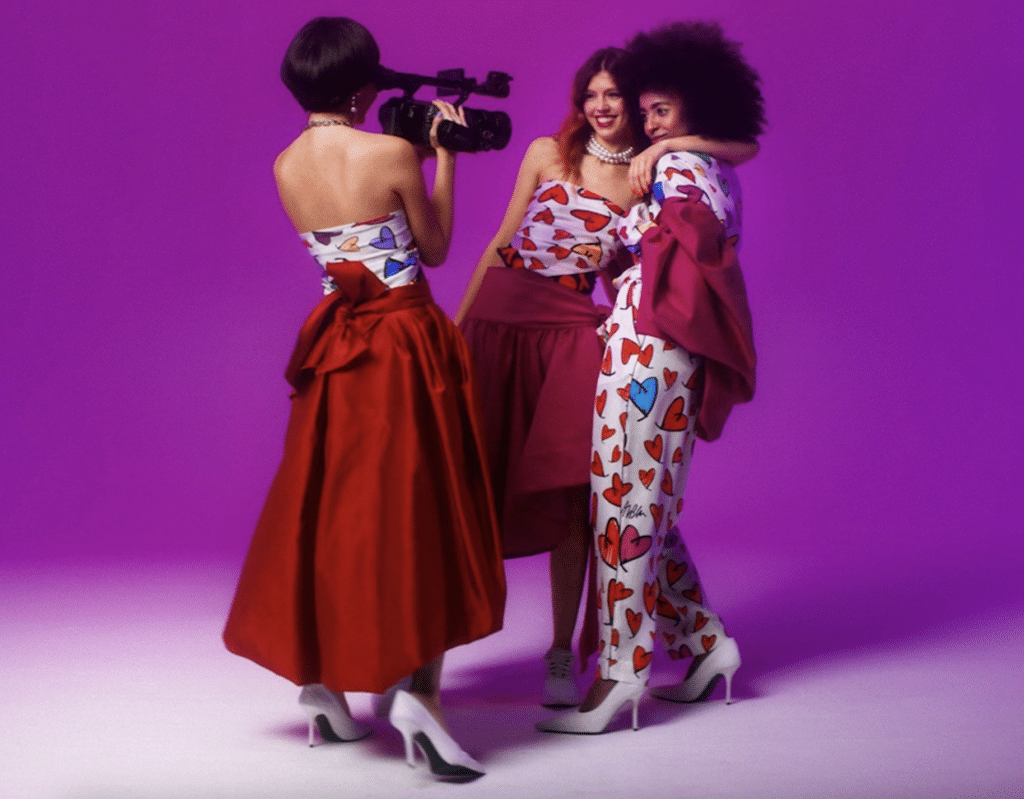LEGO has been named in a copyright lawsuit over a jacket that adorns one of its mini-figures in the Queer Eye set that it released last fall. In the complaint that he filed in a federal court in Connecticut in December, artist James Concannon asserts that in 2018, he created a custom leather jacket for Antoni Porowski, one of the stars of Netflix’s Queer Eye series, which LEGO “intentionally” replicated for its Queer Eye-themed set without seeking Concannon’s authorization and without compensating him. What LEGO did do, Concannon claims, was to offer him “a free Fab 5 Loft set – which retails for $99.99 – for [his] six-year-old son to play with, only to later revoke that offer, telling [him] that LEGO does not give away its products for free.”
According to Concannon’s copyright infringement complaint, Porowski wore a number of garments bearing his artwork on the Netflix show, and in all but one instance (when Porowski wore the leather jacket), Concannon says that he received an email from a clearance coordinator for the show to approve such uses. (Is that really necessary?) In light of his friendship with Porowski and given that Porowski often credited him as the creator of the works that appeared on the show, Concannon claims that when he saw the jacket – which he “created using a plain black leather jacket that Porowski sent to Concannon, to which Concannon added his original artwork, composing and arranging each artistic element to reflect his signature aesthetic” – on an episode of the show, he “figured this was simply an oversight on Netflix’s part and was not disturbed.”
However, Concannon asserts that he while “never granted Netflix a license to display the jacket on the show (as he had in previous instances where his works were featured on the show), he certainly never agreed to allow LEGO – the largest toy company in the world, with over $5 billion in annual revenue – to commercially exploit his artwork for free” in connection with its Queer Eye set.
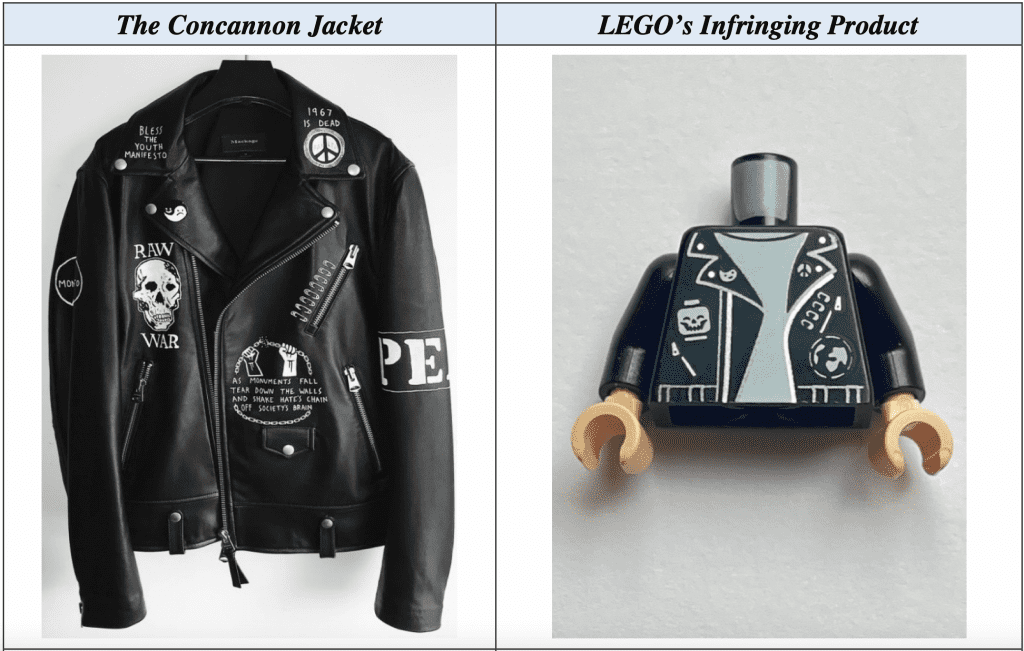
In furtherance of his infringement claim, Concannon argues that LEGO “painstakingly copied not only the individual creative elements of the jacket, but the unique placement, coordination, and arrangement of the individual artistic elements, as well,” for which he maintains a copyright registration with the U.S. Copyright Office.
Concannon further asserts in his complaint that after sending a cease-and-desist letter to LEGO, the company’s counsel responded by telling his attorney that if they brought a case against LEGO, “it would be an ‘uphill battle’ [for them],” and claimed that “in effect, by gifting the jacket to his friend Porowski knowing that [he] would wear the jacket on Queer Eye, Concannon was granting an ‘implied license’ to Netflix to use the jacket in any manner it pleased – including sub-licensing the work to LEGO.”
Setting forth a single claim of copyright infringement, Concannon alleges that LEGO “infringed and will continue to infringe upon his copyrights in the jacket by, among other things, copying, publicly displaying, distributing, and creating derivative works of the infringing product, which is substantially similar to, derived from and a derivative of [his] original artwork and design.” Against this background, he is seeking a monetary damages award for “all damages [he] suffered and for any profits or gain by [LEGO] that is attributable to” such alleged infringement, including statutory damages and attorneys fees.
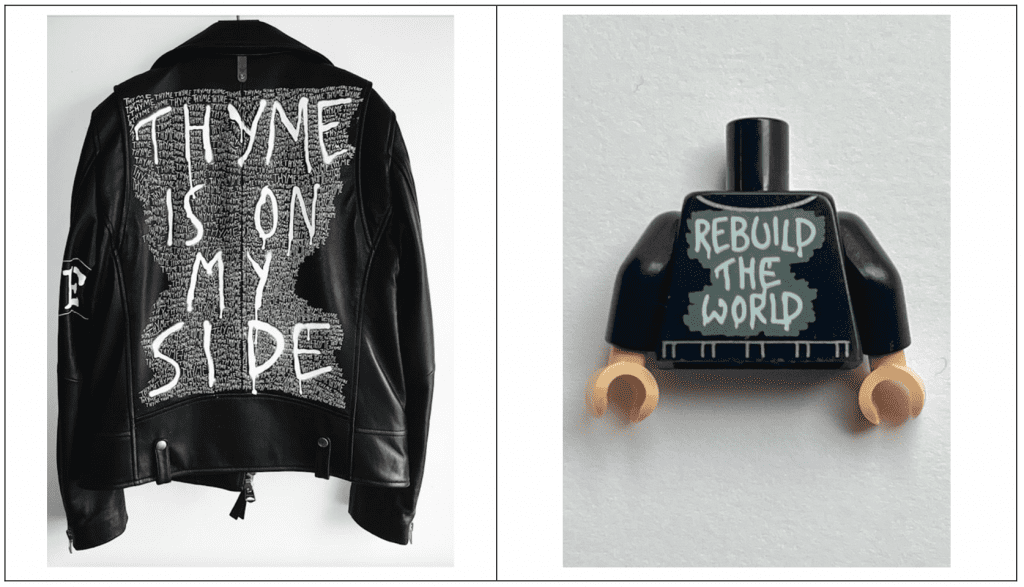
As for the merits of the case, lawyer and intellectual property researcher Mike Dunford dove into it here. In addition to pointing to issues on the damages front (namely, that while Concannon’s copyright was registered in November 2021, the use by LEGO predates that, ruling out statutory damages and attorney’s fees), Dudford takes issue with how much of the jacket is actually protectable given that “the allegedly infringed work is the art on the jacket, separated from the jacket,” itself, as copyright law only protects creative elements that are separable from a useful article, such as a jacket. (This was the big takeaway from the Supreme Court’s 2017 decision in the Star Athletica case.)
So, in the case at hand, the protectable element as a whole is “a wrap-around two-dimensional image of what is on the jacket,” per Dudford, who contends, however, that “at least some of the elements of the two-dimensional artwork are not independently protectable,” and says that he is not sure if some of them are even protectable in terms of “their position on a jacket with other elements – in particular, the peace sign on the lapel.”
The case really hinges on whether or not the court finds that the “unique placement, coordination, and arrangement” of the elements that appear on the jacket are, in fact, “protectable and infringed notwithstanding the substitution of different individual artistic elements,” Dudford notes.
A rep for LEGO was not immediately available for comment.
The case is James Concannon v. LEGO System, Inc. and LEGO A/S, 3:21-cv-01678 (D. Conn.)











